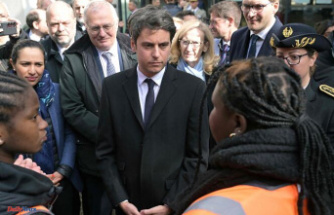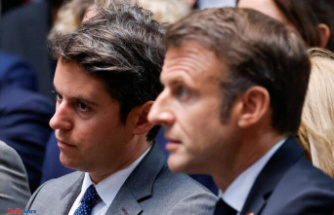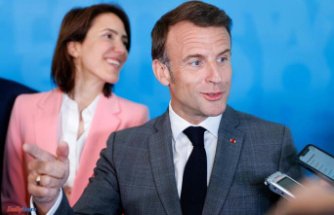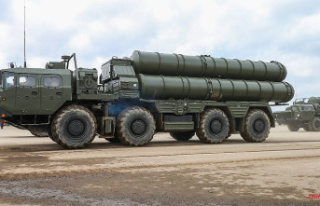As every year, at the COP there is a fight about who is allowed to pump how much CO2 into the air. But to focus on actually cutting back on CO2 emissions, we need to completely rethink our climate thinking. High time to make emissions trading Paris-compliant.
The Kyoto Protocol has just turned 25 years old. Actually no age, especially not for an international agreement with complicated, legally binding mechanisms that took a long time to prepare to get up and running. Nevertheless, it has expired again - and the trade in "avoided emissions" that it invented should have been replaced by the successor mechanism to the Paris climate agreement long ago. The world community is working on this for the seventh year in a row, with moderate success. So it's high time to finally bury this remnant from the 1990s and move on to an emissions trading system that is in line with the spirit of the Paris Agreement - and also with the physics of the atmosphere.
As the first more or less binding treaty on climate protection, the Kyoto Protocol was a milestone. But it also invented the hot air trade, as the treaty introduced what is known as the Clean Development Mechanism (CDM). This certified that a project in a developing country had "avoided" a certain amount of emissions by using less emitting technologies than those used at the time of the Kyoto Protocol. The countries could then sell these "Certified Emissions Reductions" (CERs) to governments from the North.
This was useful in some cases to finance wind and solar power plants. For example, the world's largest solar thermal power plant in Morocco benefited from this additional income. However, many projects of this so-called "Clean Development Mechanism" solved problems that would not have existed without them. For example, attempts have been made to extract landfill gas from landfills in Africa, although these were poorly suited for this due to the lack of sealing and characteristic compositions. More drastically, Certified Emissions Reductions were also generated by new factories in China producing the ozone-depleting refrigerant R-22, despite no matching market demand. These factories were only profitable because they could produce and sell CERs by burning the ozone-depleting HFC-23 exhaust gas.
For smaller systems, the relative administration and verification effort was often very high - too high to really make a difference for the climate. And a whole branch of consultants, experts and administrators formed around the CDM. A large team from the World Bank, which remains the most important motor of the "carbon market" to this day and channels the main demand for CERs, ensured that the financing was secured in the long term. At the Secretariat of the United Nations Framework Convention on Climate Change (UNFCCC), there is another team and an expert council that have developed the verification methods and conditions under which official CERs are issued. So these organizations took care of the new currency that the Kyoto Protocol created: non-created emissions. Hot air that shouldn't exist. And with it the Clean Development Mechanism as a kind of money printing machine that gives value to this currency.
This currency soon asserted itself in many areas outside of the Clean Development Mechanism - and it lives on there: National self-commitments relate to percentage reductions compared to an imaginary reference development, because after all, gas-fired power plants emit far less CO2 than coal-fired power plants, which are also used could have built. The underlying assumption seems to be that you had a right to pollute the environment with coal-fired power plants, so you have to give credit for doing something just that little bit better. This may be of educational value, but it is not real climate protection.
But even the international climate financing mechanisms such as the Global Environment Facility or the Green Climate Fund have to prove to their sponsors that the projects they finance did not produce millions of tons of CO2. Now it is almost impossible to estimate what would have happened if these funds had not been available. In addition, these projects often first create the conceptual and political foundations in developing and emerging countries so that investments in renewable energies or energy efficiency can be made many years later. It is therefore not entirely fair to attribute these emissions to projects that, for example, train people, lay analytical foundations or propose political instruments. But the logic of "avoided emissions" created by the Kyoto Protocol makes it necessary to use this indicator.
Since this logic encourages double counting, the global mechanisms have probably - theoretically - avoided more emissions over the years than were created in the same period. According to this logic, the climate clock should have been running backwards for a long time. Every child notices that something here does not correspond to reality.
Fortunately, the Paris climate agreement has made a paradigm shift: it no longer takes the reference against which we must avoid emissions, but sets an absolute zero emissions target. Being compatible with the Paris Agreement does not mean that we have to emit less than we can, it means that we should set our emissions standard to zero. If we do not comply with it, but instead emit greenhouse gases, we will come under pressure to justify ourselves. Emissions trading on this basis can define carbon budgets and make real emission rights tradable. This is how it becomes a shoe.
Now we just have to apply it. The concepts of what the Paris Agreement means in practice are being tried out by the most innovative mechanisms. Here, too, many expert heads will smoke and a lot of printer ink will flow until the royal road is found. But it promises to lead to real climate protection, and not to the avoidance hot air trade favored by the Kyoto Protocol. let it rest in peace
Christine Wörlen is the founder of the research and consulting company Arepo.












